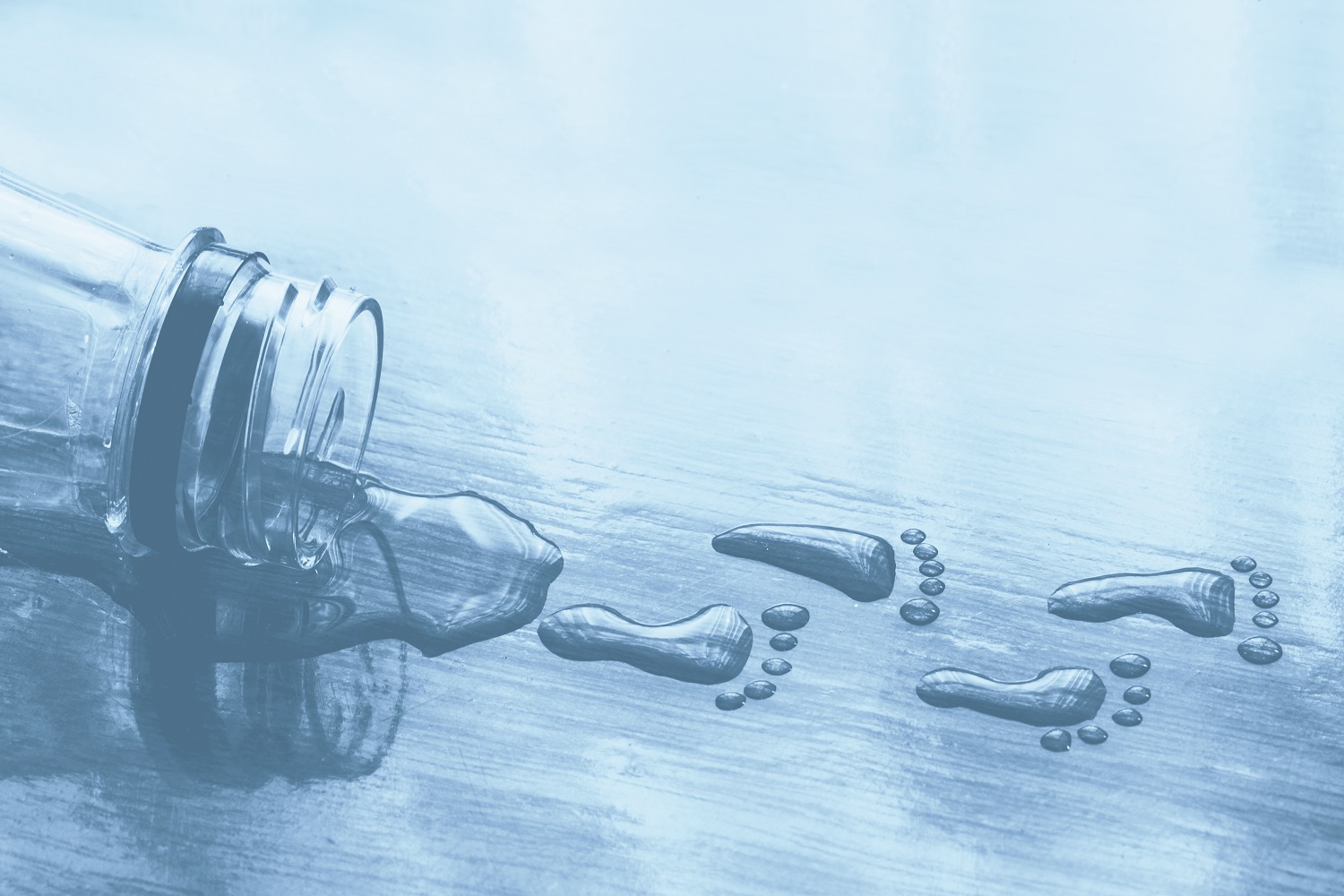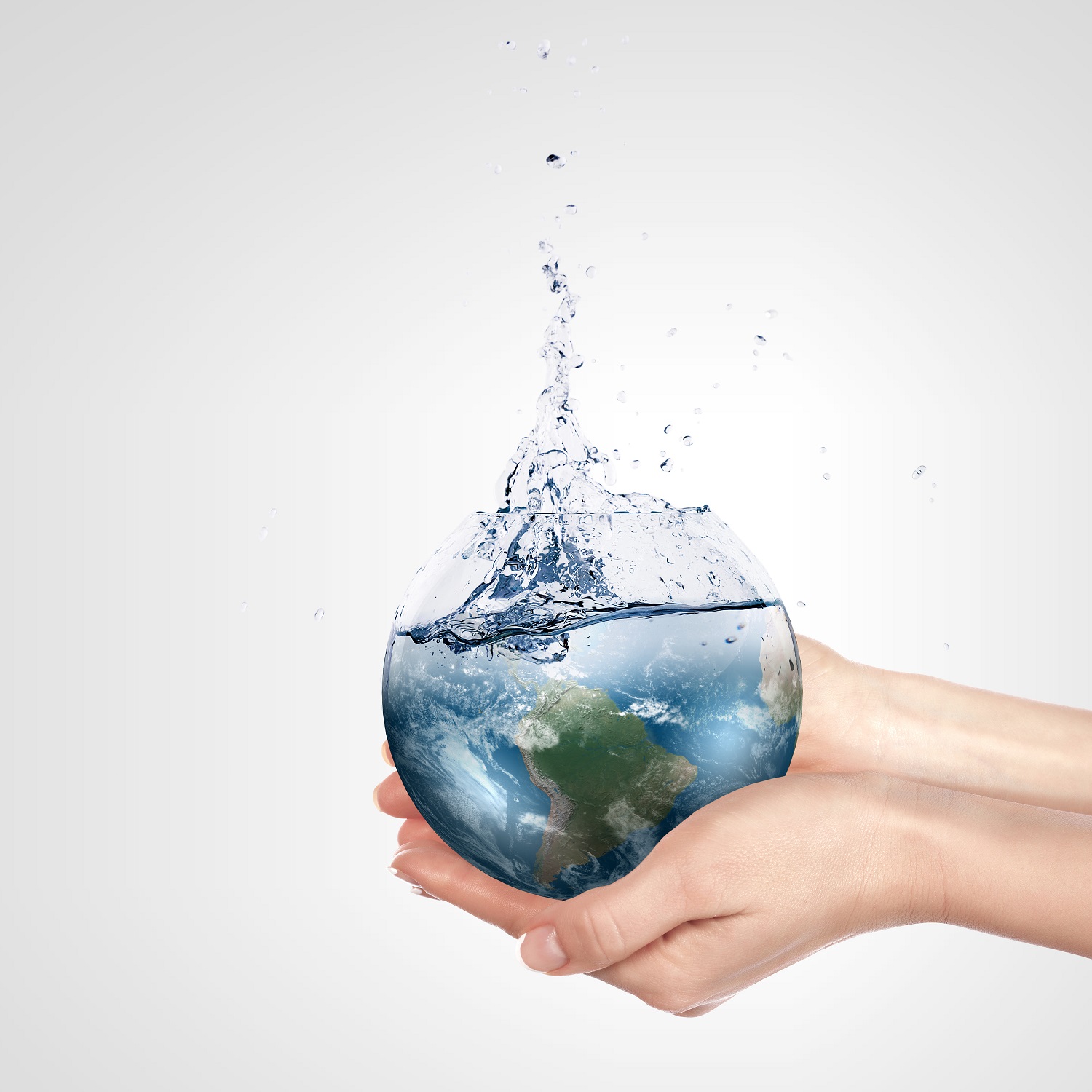As the sizzling summer approaches, every convenient store around the corner is stocked with bottled water. But did you know that for every 600 cc bottled water that is produced, 10.5 liters of water is consumed, which is 17.5 times the amount of water contained in each bottle? And do you know what price is paid to produce a cup of coffee? That’s 140 liters of water! As the water footprint awareness of the public increases, the hidden, jaw-dropping cost of water we consume every day is gradually coming to light.

What is Water Footprint?
Water footprint is similar to carbon footprint. It is a measurement of the total amount of water we use, including the water used for producing and shipping products, and for other purposes. Water footprint can visualize the hidden water use behind products. For example, behind that morning cup of coffee that is probably just 200 ml is 140 liters of water used to grow, produce, package, and ship the beans. Letʼs look at another example. To produce 1 kg of beef, 6.5 kg of grain, 36 kg of roughages, and 144 liters of water (only for drinking and servicing) are required. Adding to that is another 15,300 liters of water for producing the volume of feed. In other words, the water footprint of 1 kg of beef adds up to 15,500 liters of water. Simply put, water footprint is an effective tool for analyzing water resources. Basically it is an indicator that clarifies how human activities and product manufacturing affects water and proposes solutions to ensure a sustainable future for water.
Youʼll Never Guess the Water Footprints of These Everyday Products?
What we donʼt see behind the products we use and the food we eat every day is how much all of it costs. Thus it is easy for us to forget how much water is actually used during production and shipping. Let us look at the shocking facts about the water footprints of these products and food.
The water footprint of common products
- A t-shirt: 2,700 liters of water
- A pair of leather shoes: 8,000 liters of water
- A car: 150,000 liters of water
- A sheet of A4 paper: 10 liters of water
- 1 kg of rice: 3,400 liters of water
- A slice of bread: 40 liters of water
- 1 kg of chicken: 3,900 liters of water
- A hamburger: 2,400 liters of water

How Your Lifestyle Affects Water Footprints?
Every day a person uses an average of up to 270 liters of water in Taiwan, far beyond the daily per capita water use of 250 liters worldwide.This is a sign that there is still a lot of room for improvement for Taiwanese people in terms of water usage. Do you know how much water is consumed through the choices you make in supporting your lifestyle, including food, clothing, housing, transportation, and recreation?
The online Water Calculator developed by the Environmental Quality Protection Foundation can help you quench your curiosity! Simply just key in information and your water footprint will pop up right in front of you. Maybe after you see the digits you will begin to think of ways to conserve water in your daily life.
According to the Water Resources Agency of the Ministry of Economic Affairs, large amounts of water are used in our daily lives. Take a look at the top 10 ways people waste water and you will understand why Oʼright encourages you to protect our planet and preserve our water.
Top 10 ways to waste water
- Bathing 150 liters of water is used every 5 minutes
- Flushing the toilet 54 liters of water is used per day
- Cleaning the floor (outdoors) 45 liters of water is used every 5 minutes
- Laundry 24 liters of water is used per day
- Brushing your teeth 18 liters of water is used per day
- Washing your face 18 liters of water is used per day
- Washing the dishes 12 liters of water is used per day
- Flowering plants 10 liters of water is used per day
- Washing rice 6 liters of water is used per person
- Drinking water 1 liters of water is used per day
Water Footprint
In 1993, Professor John Anthony Allan from Kingʼs College London coined the term “virtual water” and introduced the concept which calculates the amount of water that is embedded in food or other products needed for its production and shipping. It was only later in 2002 when the water footprint concept was introduced to the world by Professor Arjen Y. Hoekstra from the Netherlands. Due to the growing concerns over water scarcity in recent years, water footprint gradually caught the attention of governments, corporations, and people around the globe.
參考資料
World Water Day 2015
Environmental Quality Protection Foundation
Water Calculator
Water Resources Agency, Ministry of Economic Affairs


